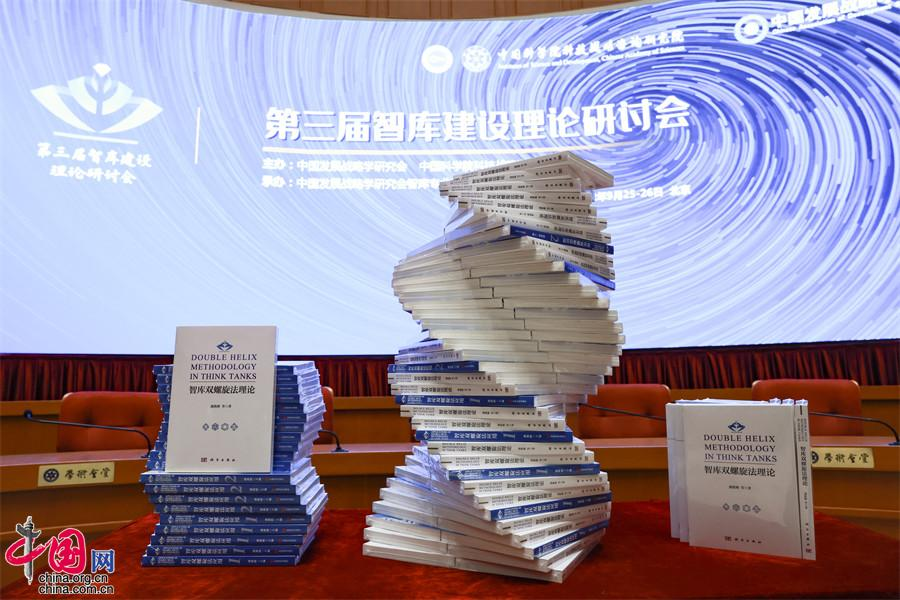Two books on the application of think tank double helix methodology released
 0 Comment(s)
0 Comment(s) Print
Print E-mail China.org.cn/Chinagate.cn by Sun Fang, November 09, 2022
E-mail China.org.cn/Chinagate.cn by Sun Fang, November 09, 2022
The Institutes of Science and Development, Chinese Academy of Sciences (CASISD) recently released two books on double helix methodology and its application in think tank research – “Double Helix Methodology in Think Tanks” and “Applications of Double Helix Methodology in Think Tanks (Volumes I and II).”
Think tanks have been playing an increasingly vital role in government decision-making, especially due to the economic challenges and general uncertainty that exist in the COVID-19 era. Like a strand of DNA, double helix methodology features two main interconnected components and consists of an integrated model concerned with data, information, intelligence, and solutions (DIIS) and one covering mechanisms, impact, policy, and solutions (MIPS) as formulated in the CASISD books. The combination of these aspects results in an effective, comprehensive process with a clear focus on creating sound, substantive policy and solving problems.
“Double Helix Methodology in Think Tanks” proposes double helix methodology as a way of enhancing research and policy proposals. The book explores 10 key issues, including the decomposition and analysis of think tank problem, the scenario analysis driven by think tank problem, the uncertainty analysis of think tank problem research, the policy simulation analysis of think tank problem research, the circulative iteration of think tank research, the coupling relationship between DIIS and MIPS, the expert organization and management of think tank research, the human-machine combination think tank research support system, the combination of objective analysis and subjective judgment, and the think tank product quality management.

“Double Helix Methodology in Think Tanks” books are arranged like a double helix. The Institutes of Science and Development, Chinese Academy of Sciences (CASISD) released the book recently. [Photo by China.org.cn]
The “Applications of Double Helix Methodology in Think Tanks (Volumes I and II)” features a collection of case studies and achievements in think tank research that utilize the methodology in accordance with the principle that theory guides practice and practice validates theory. The book discusses concepts and ideas related to think tanks, the philosophical underpinnings of double helix methodology,and the application of the methodology in frontier research related to fundamental topics and issues in areas such as social policy, economics and technology. It also summarizes laws and standardized procedures that have emerged and been formulated in the course of the application of double helix methodology across various scales and types of think tank research and proposes a systematic method designed to improve the quality of results and better serve scientific decision-making.

Pan Jiaofeng, president of CASISD and chairman of the Chinese Association of Development Strategy Studies, delivers a speech about think tanks and double helix methodology. [Photo by Dong Ning / China.org.cn]
Pan Jiaofeng, president of the CASISD and chairman of the Chinese Association of Development Strategy Studies, noted that think tank research is regarded as an undertaking embodying scientific thinking in its philosophy, orientation, logic, and processes when double helix methodology is applied to it. He also mentioned that the methodology entails engaging insystematic study of research paradigms using scientific tools and methods that are evidence-based and solution-oriented when employed by think tanks and emphasized that this helps make random, sporadic, theoretical, academic, and static research more systematic, steady, practical, empirical, and dynamic, transforming it from a single-subject undertaking into a multidisciplinary one.


